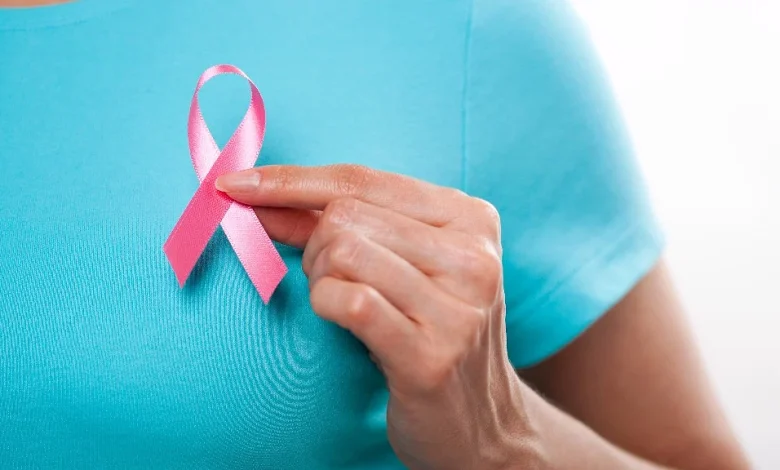What factors associated with breast cancer?

Breast cancer is defined by uncontrolled cell proliferation in the breast. Which breast cells become malignant determines the type of cancer. More Recent Discussion
Breast cancer can develop in any part of the breast. Lobules, ducts, and connective tissue are the three main breast structures. The lobules glands are in charge of milk production. Ducts are the tubes that deliver milk to the nip. Everything is surround and connect by connective tissue (fibrous and adipose tissue). Most breast cancers begin in the ducts or lobules.
This malignancy has the potential to spread outside of the breast via blood and lymphatic arteries. When cancer has spread to other places of the body, it is said to have metastasize. Arimidex 1 mg is a breast cancer treatment.
Breast Cancer Variants
The following are the most common kinds of breast cancer:
Cancer that has spread to the ducts Cancer cells form in the ducts and subsequently move to other areas of the breast tissue. The process through which aggressive cancer cells spread to different places of the body is known as metastasis.
Lobular malignancy cause by invasion Breast cancer cells spread from the lobules to the neighbouring breast tissues. These cancer cells are capable of spreading to other places of the body.
Paget’s disease, medullary, mucinous, and inflammatory breast cancer are all uncommon kinds of breast cancer.
DCIS is a type of breast cancer that can prose to invasive carcinoma. The cancer cells have not spread to other breast tissues and have only reached the duct lining.
What Are the Signs and Symptoms of Breast Cancer?
Breast cancer symptoms differ from person to person. Some people have no symptoms or indicators.
Breast cancer (armpit) symptoms include a new breast or armpit mass.
Breast expansion or thickening in a specific area.
Skin irritation or breast dimples are examples of these conditions.
Skin discoloration or scaling around the nasal cavity or breast.
Nasolabial fold traction or discomfort
In addition to breast milk, nipple discharge may contain blood.
Any alteration in the size or shape of the breasts.
Breast discomfort at any region
Remember that these symptoms could be cause by something other than cancer.
If you see any concerning signs or symptoms, make an appointment with your doctor right once.
What factors contribute to a healthy breast?
Breathlessness is the norm. What one woman considers normal may differ from what another woman considers normal. The breasts of the great majority of women are lumpy or uneven. The shape and texture of your breasts can change as a result of your period, having children, decreasing or gaining weight, and taking certain drugs. Similarly, as women age, their breasts fluctuate. Additional information can be found on the National Cancer Institute’s Breast Conditions and Changes page.
Aromasin 25mg is another medication use in the treatment of breast cancer, particularly in postmenopausal women with hormone receptor-positive breast cancer. Aromasin belongs to the class of drugs known as aromatase inhibitors, just like Arimidex.
What Do Breast Tumours Indicate?
Breast lumps can be cause by a variety of disorders, including cancer. The majority of breast lumps, however, are cause by other medical issues. The two most prevalent causes of breast lumps are fibrocystic breast disease and cysts. Lumpiness, tenderness, and pain are symptoms of fibrocystic disease in the breast. Cysts are fluid-fill sacs that can form in the breast.
What are the Risk Factors for Breast Cancer?
According to one study, multiple factors increase the chance of breast cancer. The two most significant risk variables are female gender and growing age. The majority of breast cancers are detect in women over the age of 50.
Despite the fact that no known risk factors exist, some women will get breast cancer. A risk factor’s presence does not always imply the presence of a disease, and not all risk factors have the same effect. Despite the fact that the vast majority of women have risk factors for this malignancy, the vast majority do not develop it. Talk to your doctor about risk reduction strategies and breast cancer screening if you have certain tumor risk factors.
You can’t change the risk variables.
Getting older. The risk of acquiring breast cancer increases with age. The vast majority of these tumours are detect beyond the age of 50.
Modifications to the DNA. Women who inherit abnormalities in certain genes, such as BRCA1 and BRCA2, are more likely to develop breast and ovarian tumor.
Reproduction Origins Beginning menstruation before the age of 12 and menopause after the age of 55 enhance a woman’s risk of developing breast cancer by exposing her to hormones for a longer length of time.
Possessing huge breasts. The presence of more connective tissue than fatty tissue in big breasts can make mammography difficult to detect tumors. Women with thick breast tissue are more likely to develop this cancer.
Personal experience with this tumor or with non-cancerous breast disorders. Women with a history of breast tumor it is more likely that it will be treated with medications again. Breast cancer risk is associated with noncancerous breast illnesses such as atypical hyperplasia and lobular carcinoma in situ.
There is a history of breast or ovarian cancer in the family.
If a woman’s mother, sister, or daughter (first-degree relative), or many relatives on either her mother’s or father’s side, she is more likely to develop breast or ovarian tumor. A woman’s risk is increased if she has a male first-degree relative who has this cancer.
In the past, radiation therapy treatment was used. Women who got radiation therapy to the chest or breast before the age of 30 (for example, to treat Hodgkin’s lymphoma) are more likely to develop this tumor later in life.
Diethylstilbestrol (DS) (DES) exposure. Some pregnant women in the United States were administered DES to avoid miscarriage between 1940 and 1971. This cancer is more common in women who used DES during pregnancy or whose mothers did.
Danger Factor Variables
Two woman strolling with a dumbbell on each hand. Physical activity has been shown to reduce the chance of having this malignancy.
Inadequate physical activity. Inadequate physical activity increases women’s risk of breast tumor.
Obesity or being overweight after menopause being overweight or obese after menopause increases the risk of having this cancer.
Hormone replacement therapy. Certain types of hormone replacement treatment (those containing both oestrogen and progesterone) used for more than five years following menopause may raise the risk of developing this malignancy. Furthermore, certain oral contraceptives (birth control tablets) have been associated to an increased risk of breast tumor.
The risk of acquiring this cancer is increased by having a first pregnancy beyond the age of 30, not nursing, and never having a full-term pregnancy.
I’m having a drink. According to studies, the more alcohol a woman consumes, the more likely she is to develop cancer.
According to a study, smoking, exposure to carcinogenic chemicals, and changes in other hormones caused by night shift work are all risk factors for breast tumor.
Who is predisposed to Breast Cancer?
A family history of cancer increases the chances of both sexes developing cancer.
This page discusses the familial transmission of this malignancy, which affects both men and women.
Your chance of acquiring this cancer may be enhanced if you have a strong family history of it or inherited mutations in the BRCA1 and BRCA2 genes. You can also increase your chances of developing ovarian cancer
Consult your doctor about breast tumor tablets that block or reduce oestrogen levels, as well as surgical treatments for lowering your chances of developing breast cancer.



